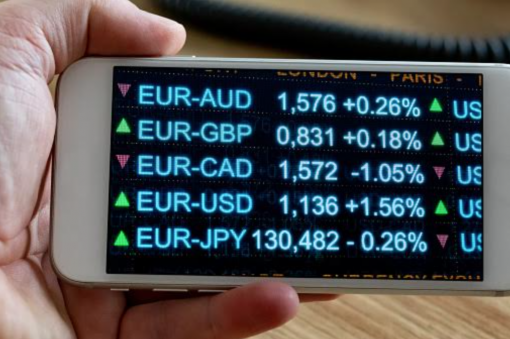
CFD stands for Contract for Difference. It is a type of financial derivative that allows traders to speculate on market movements and potentially profit from them without having to own the underlying asset. When it comes to CFD trading, we often hear about single Stock CFDs. A trader has an eye on the stock, and instead of buying shares, they buy a CFD and speculate on its price movement. We can do the same thing with indices. In fact, this is what people refer to when they talk about indices trading or index trading.
What are Indices?
To begin, we need to define indices. An index is a benchmark that covers and tracks the performance of a basket of stocks that share a characteristic. This can be market cap, geographic location, sector, industry, or even something extremely specific – like an overlap of all the above. Indices are helpful because they give traders a perspective on the overall health of the market they want to focus on.
Famous Indices around the world: North America
There are famous indices around the world, and they mostly revolve around tracking large cap stocks in each country or region. This gives traders the ability to track how the overall market is performing in each region. For example, we have all heard of the NASDAQ Composite Index. It is a stock market index that includes almost every single stock listed on the NASDAQ. It is a great indicator of how the entire stock market is performing, and many traders use it as a tool to predict how the US economy is doing.
Another famous index in the US is the Dow Jones Industrial Average (DIJA). It is an index comprised of stocks from the 30 biggest companies listed on stock exchanges in the US, and it is one of the oldest and most-followed indices.
Europe and Asia
In Asia, we have the Nikkei 225 which tracks the 225 leading companies in the Japanese equity market. We also have the Hang Seng Index that tracks Hong Kong’s 50 largest companies in the city, and more.
In Europe, we have the EURO STOXX 50 that tracks 50 blue-chip stocks from 11 countries in the Eurozone. We also have the DAX tracking 40 major blue-chip companies in Germany, the FTSE 100 tracking the top 100 companies on the London Stock Exchange, and many more.
MENA
In the MENA region, we have the MSCI Arabian Markets Domestic Index, which tracks large and mid-cap companies across the 11 Arab Markets countries. These countries are Bahrain, Egypt, Jordan, Kuwait, Lebanon, Morocco, Oman, Qatar, Saudi Arabia, Tunisia, and the United Arab Emirates. We also have the Dow Jones MENA Index, which tracks the performance of companies in the same 11 countries. On top of that, we have more specific indices, such as the MSCI United Arab Emirates Index that tracks the performance of large and mid-cap companies in the UAE market.
How to Trade Indices with CFDs
When people speak of trading indices, people often mean trading indices with ETFs, CFDs, or other derivatives. In this article, we will focus on trading Index CFDs.
To trade an Index CFD, you need to buy a contract from a CFD provider. It will allow you to speculate on an index and potentially make a profit when the market goes your way. As a trader, you will need to pay a commission (depending on the broker you trade with). The bulk of the contract is dependent on the spread. This is the difference between the bid price and the offer price at the time of buying the contract.
To open and close a CFD trade, a trader will need to purchase a contract first. They then have an open position. This type of contract does not have an expiration date, which means that it is up to the trader to decide when to close their position. This can be within a day, a couple of days, a few weeks, or even months. However, most traders tend to close out their positions within a reasonable timeframe, because some brokers may incur overnight charges for every night the position is left open.
When the trader sees that there has been significant market movement in their favour, they can close their position with a second trade where they take the opposite position. For example, if a trader’s first trade is a long position (buying), they will take a short position (selling) to close out their trade. Conversely, if their first position is a short position (selling), they will take a long position (buying) to close out their position.
Why do people trade Index CFDs?
There are a few reasons people trade Index CFDs.
Large exposure and decreased risk
Firstly, people trade Index CFDs for exposure. When you speculate on an index, you are speculating on the average performance of a basket of companies tracked. This means that individual company performance does not have that big of an impact on the performance of your investment overall. This not only means you can speculate on a bunch of stocks at the same time, but also decreases your investment risk.
Focused investment
Another advantage for traders is that they can focus on the development of a specific region, country, industry, or sector easily. The index automatically tracks the performance of all companies that share a characteristic. If a trader wants to focus particularly on companies in developing economies, they can do so. If another trader is a tech enthusiast and want to see how tech companies are doing in the US, they can do so as well.
Flexibility in taking positions
A third advantage is the flexibility people have in taking positions, which allows traders to benefit from both bullish and bearish markets. If a trader sees that the index has been rising in value, they can take a long position. If they see that an index is doing poorly, they can ride the wave and take a short position. Either way, they can potentially make a profit.
High leverage
Finally, one advantage for the (more adventurous) trader is the use of high leverage. When one trades Index CFDs, they can trade with leverage as high as 50:1. This allows them to trade position sizes with very low margins – in other words, they only need to put down a low amount at the outset. High leverage can also translate to higher profits when the trader’s speculation is correct, which is a huge advantage. However, a higher leverage can also lead to higher losses if the trader’s speculation turns out to be incorrect. Therefore, it is best to use leverage cautiously.
Get started trading Index CFDs
If speculating on the performance of indices instead of owning individual stocks sounds appealing to you, you may want to give Index CFDs a try. You can do this with a local broker or an international broker that operates in the UAE, such as Saxo. Look up the available indices you can trade and set up a trading plan that can help you make the most of your trades. If you are on the fence about trading Index CFDs, you can also read up on the topic before committing.
You May Also Be Interested In…
To spotlight your articles, contact Fromgirltogirl.com for pricing email advertise@fromgirltogirl.com or view content marketing services for packaged deals.
